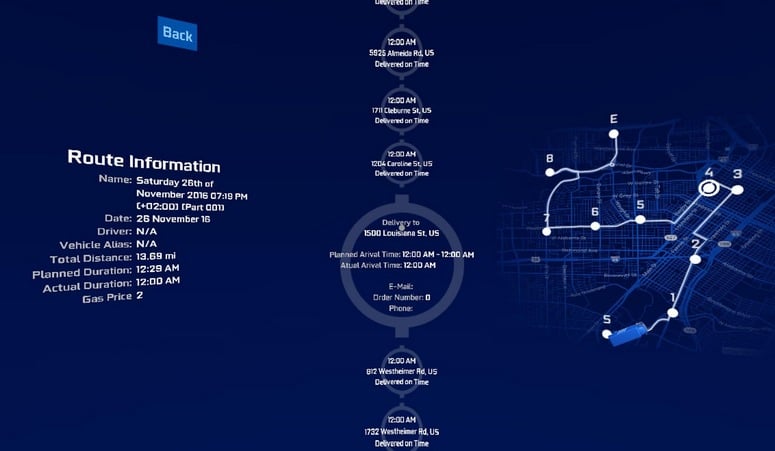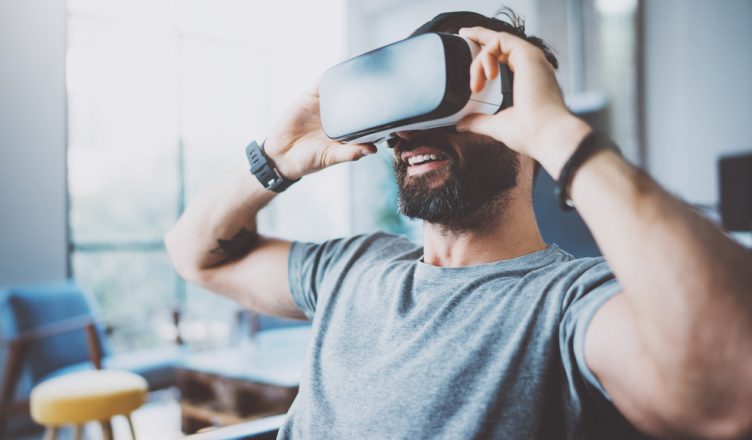Virtual reality (VR) is the next big thing.
Okay, people have been saying that for a while now. Every year, tech news sites like CNET and The Verge publish stories about the promise of VR, but the technology always seems to be another year or two away from being ready…
We promise you, this time, it’s actually happening.
In fact, you don’t have to take our word for it. Route planners have already released VR apps. You can download them right now.
But does VR offer real business value, or is it just a gimmick? What can VR do for you?
Quite a lot, it turns out. Here are five ways VR can be used to improve your business:
#1 Manage Your Fleet
Managing any kind of business is complicated. Managing a business that requires you to send employees out to meet with your customers is especially so.
Off-campus employees can be hard to handle. Are your drivers slacking off or staying on schedule? Are they veering off course or sticking to their routes? Is anyone heading into a traffic jam? Is anyone broken down? Even if you have vehicle tracking software, this is a lot of information to process.
VR makes processing information easier. In a VR environment, you can review several different displays in the same 360° dashboard. This’ll help you keep everything organized.

#2 Improve Training And Onboarding Processes
Hiring employees is expensive. In addition to direct costs like salaries and benefits, there are also indirect costs, like the lost productivity you have to deal with as new employees make mistakes while learning on the job.
With virtual reality, you can improve your training process and cut down on those mistakes. Instead of explaining to trainees what your process is like, you can show them. And while they’re completing their routes, you can use virtual reality to check in on them and make sure they’re doing okay.
Want To See For Yourself How Route4Me Can Boost Your Profits?

#3 Increase Customer “Investment” In A Purchase
Forbes reports that Audi’s use of VR allowed them to increase car sales by a staggering 60%.
VR makes the abstract concrete. In Audi’s case, VR allowed customers to take test drives without ever leaving their home. Describing to a customer what it’s like to drive a new Audi is one thing – actually showing them what it’s like is much more effective.
Whatever product or service you offer, VR makes it much easier to sell. It’s ‘try before you buy’ taken to a whole new level.
#4 Prepare Your Staff For Relocations
Moving your business to a new location can be a nightmare for your staff, especially the IT department. It might take weeks to get everything set up and running smoothly.
This transition isn’t as difficult when you have VR. Your IT staff will be able to “walk” through the building to get a close look at the layout, plan accordingly, and get you up and running on day one.
VR will help non-IT staff members transition, too. Everyone will know where to go and what to do before you even move.
#5 Teleconference To The Max
Businesses are becoming less and less centralized. At-home employees are happier and more productive than office workers. According to the Bureau of Labor Statistics, 23% of American workers do at least some of their work from home.
Communication is the key to making a decentralized setup work. Video chats are better than phone calls, but they still don’t convey the nuances of being in the same room as someone.
With VR, you’ll get those nuances. Better communication means your business will be more efficient, and improved efficiency means you’ll make more money.
So, do you have any questions about virtual reality? Do you think the routing software you’re using is really the best route planner for your business? If it doesn’t have a VR app, it might be time to move on.
Want To See For Yourself How Route4Me Can Boost Your Profits?




